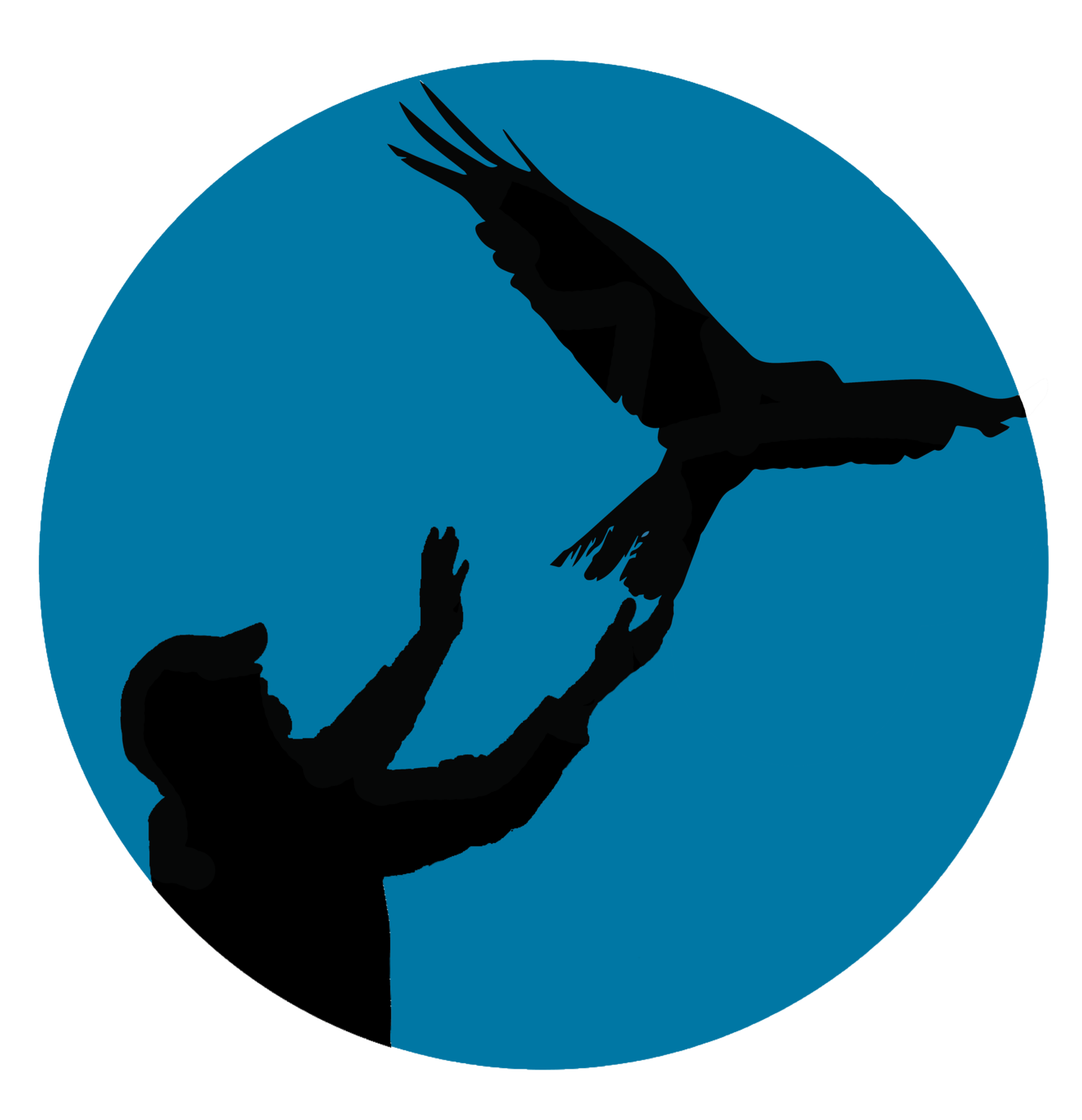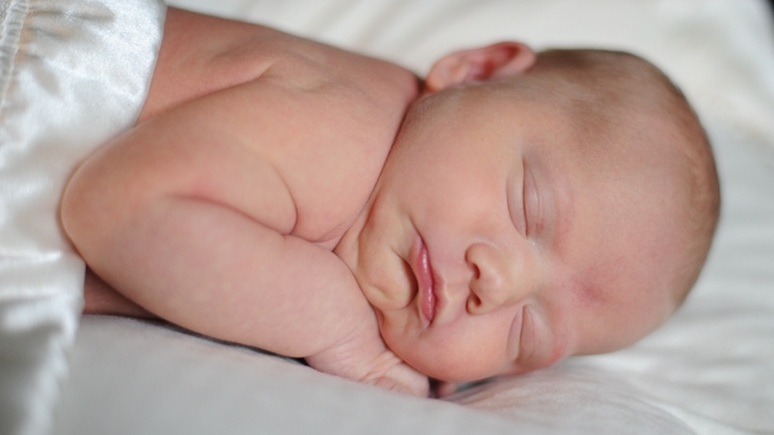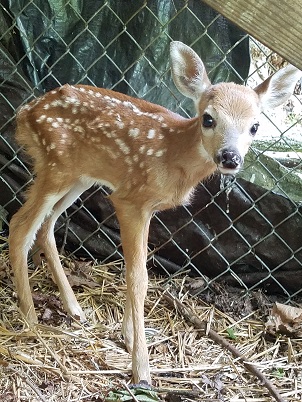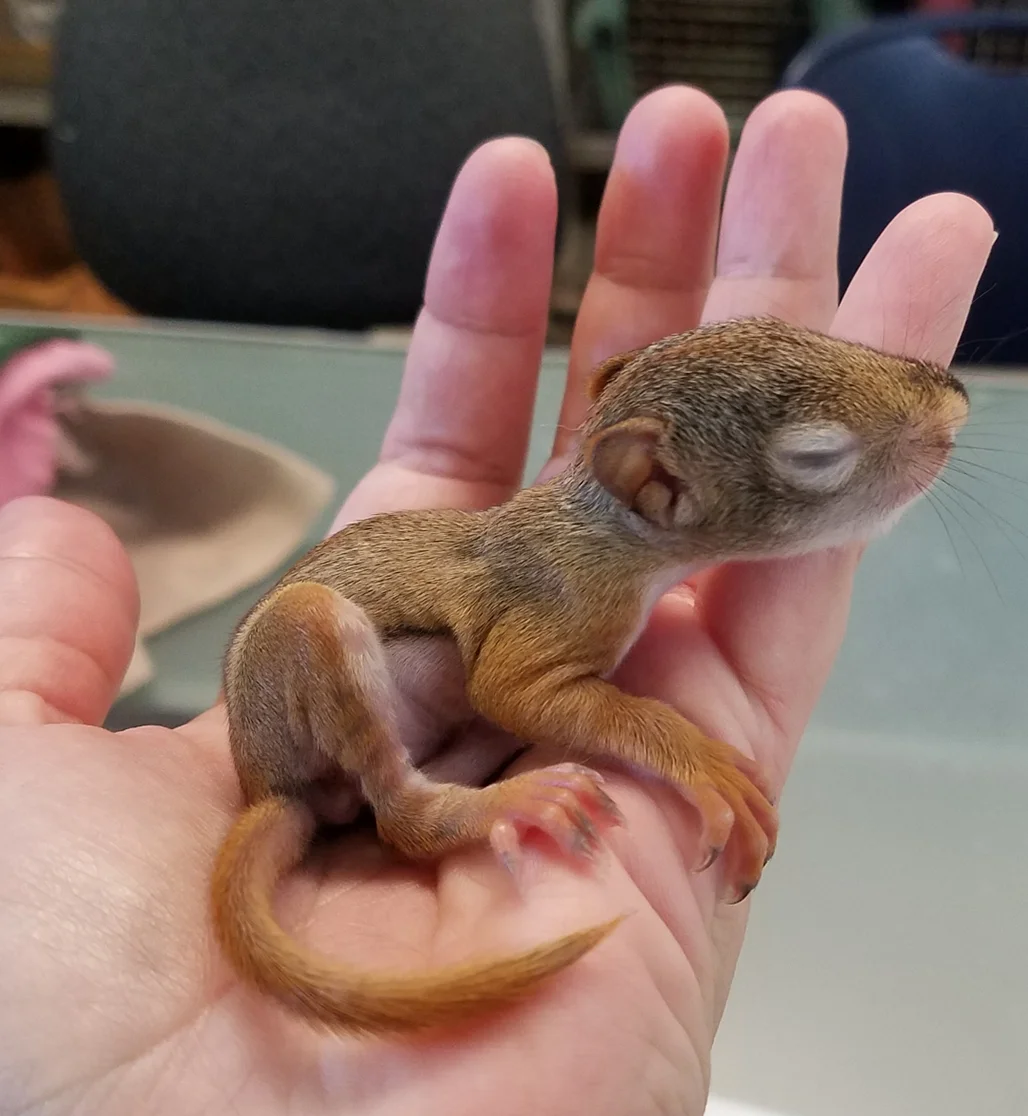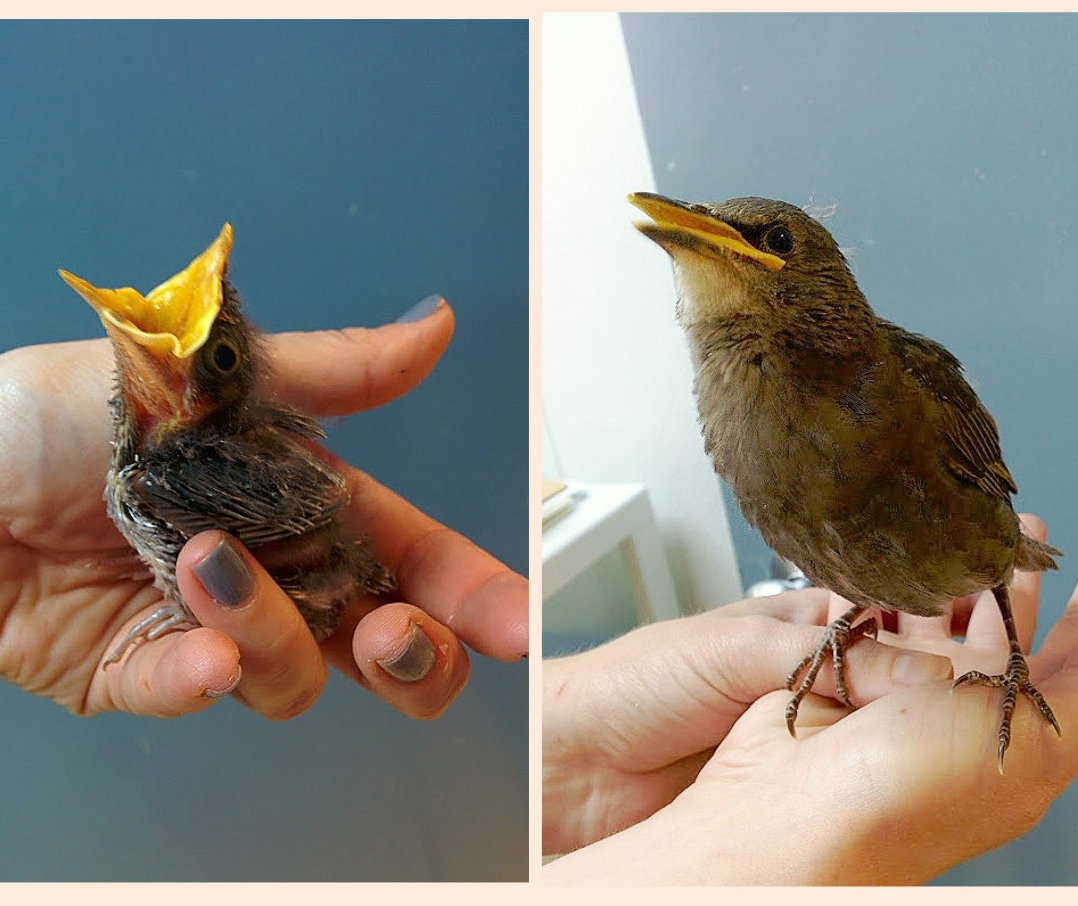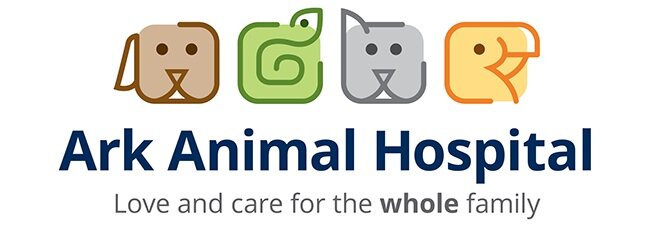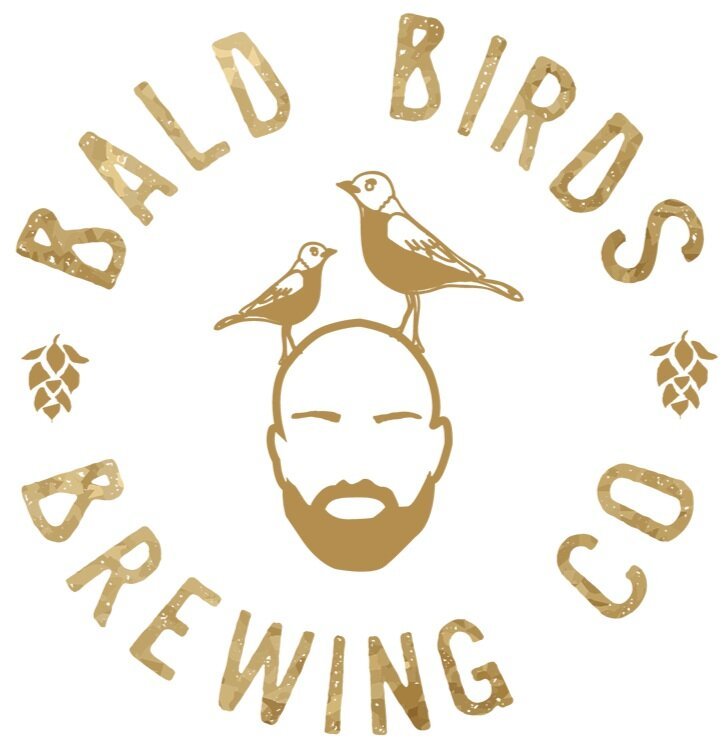Our Education and Executive Directors explain the greater impact of spotted lanternfly remediation efforts.
Infamous Spotted Lanternfly
Many admissions this season result from unintended consequences of spotted lanternfly eradication products. Many products kill indiscriminately causing undue harm to wildlife that call our communities home. One such product, sticky tape, ensnares birds, flying squirrels and other animals in a particularly painful way. Our resident expert, Michele Wellard, was interviewed by KYW on the topic. Take a listen, below.
Virginia opossum
The opossums first line of defense when afraid is to hide, but when necessary it will hiss, growl, bare its teeth, and even lunge to scare potential threats. These juveniles are practicing their tough guy look.
Box Turtle Injuries
Though tough and able to protect from many dangers, a turtle shell was not designed for the risks of the modern world. During the last few weeks of May, we received a number of turtles with shell injuries. Most had been hit by cars, probably while crossing the road in search of a place to lay eggs. This turtle has an injury to his plastron, the bottom shell, and will be with us while it heals.
Baby Fox Rehabilitation Considerations
By Rick Schubert, Director
Last week we received our first baby Red Fox of the year (above) Before the Ooo's and Ahhh's commence, there are some important things to say about this:
First, it is only as a last resort that wildlife rehabbers take animals like this into human care. Most of the work we do is over the phone, and out of every call we receive about a possibly orphaned animal, we only need to admit about a quarter of them to the Center. The rest either just need to be left alone, or we can talk you through reuniting them with the parents. That's why experience is so critical in a wildlife rehabber.
Second, the red fox is a Rabies-vector Species in Pennsylvania, along with raccoons, woodchucks, skunks, coyotes, and bats. It is beyond critical that these animals are not handled with bare hands. Any mistakes here means a death sentence for the animal. Fay, the volunteer feeding the fox here, is vaccinated against rabies and has been volunteering for us for 13 years.
Third, this is a lone single fox...we eventually have to get it with others. The cardinal sin of wildlife rehabilitation is to rehab any animal in such a way that it becomes tame. To do that is a gross breach of our ethics, and will result in the death of the animal. It MUST be raised with others of its own kind, it MUST have absolutely minimal handling, and upon release (in this case, at about six months old), it MUST be 100% able to survive on its own. Teaching baby foxes to be foxes is not an easy task, especially because it must be done without them seeing humans. But, that's why we're here. We respect their wildness, we respect their free will.
Ok, you may resume ooh-ing and ahh-ing.
I FOUND A BABY...!
By Michele Wellard, Assistant Director
What would you do if you found this baby alone in the woods? As a human, you would know it was an emergency. And you would immediately start to think about the child's mother -Did something happen to her? Or did she abandon her baby? But what if the newborn baby you found was a wild animal baby?
When it comes to baby animals, some animal parents treat their newborns differently. Certain animal mothers leave their babies alone for much of the day (deer/rabbits) and for good reason. Some animals supervise their babies just as carefully as human parents - for example, ducks and geese never leave their babies unattended. As humans, we are conditioned to think that a newborn baby animal alone is always an emergency. But once you know WHY some animal mothers do what they do, it's easier to discern when a baby animal needs help, and when it doesn't. Animals have different threats than we humans do - in their world, someone is always trying to eat their babies. So, hiding the babies, and not drawing attention to them, is of highest importance. In many cases, the mother herself may bring danger to the baby.
Newborn baby deer (fawns) are left alone most of the day, but baby geese (goslings) are never away from their parents, and a lone gosling is in need of help. Knowing how animal parents relate to their babies helps a caring human to understand if an animal needs help.
There are some significant similarities, though, between human and baby animals. For example, if a human mother accidentally got separated from her baby, she will never reject it, no matter who touched it. The same is true for animal mothers. Secondly, if a person found a human baby, he wouldn't start pouring water into its mouth, giving it inappropriate formula, or think about keeping it for himself! Sadly, this often happens to baby animals by people who just want to help. Inappropriate formula can kill a baby animal, so too can feeding a baby before he is medically rehydrated.
Although a baby animal alone might be fine on his own, like a human baby, any baby animal that is bleeding, has been bit by or a cat or dog, or has flies or fly eggs on it needs help. This is a true emergency.
Below are some descriptions that should explain whether a baby animal is ok to be without a parent, and what you should do if you find one.
DEER
In May and June, fawns are born. And, like clockwork, we start receiving calls from people who found a baby fawn, all on its own, seemingly abandoned - in their flower bed, under a tree, or on a hiking trail. But the mother deer didn't just run off to the bar or to Target and ditch her baby - in fact, by leaving the baby alone, in human terms, she is being “responsible”. Mother deer often have twins, and separate them. She will "park" each baby in a spot she chooses, and encourage it to stay there. Then, she'll go...for most of the day. The theory is that the babies are safer alone - with her size and her developed body odor, she would attract predators, increasing danger to the baby.
The baby is conditioned to stay very still, with its white spots mimicking the effect of sun dappling through leaves, providing camouflage. So, if you see a baby deer alone - even a brand new, tiny newborn - it's normal for him to be alone, and it's safer for him. Keep children and pets away. Mom will return to feed the baby at regular intervals. She may move him tomorrow, or she may keep him there. If you can watch through the window,or from a distance, you will when you see the reunion between mother and baby. However, if a baby deer is crying inconsolably, has feces around its rectum, or flies around it, it needs help. Call a rehabilitator.
EASTERN COTTONTAIL RABBITS
Like baby deer, baby bunnies are safer alone because of mom's size and body odor. Mother rabbit will make a nest that isn't much of a nest - just a shallow depression. After she gives birth, she'll cover the babies in dried grass and lots of her own grey brown fur. She will leave them alone,so not to attract predators, only returning at dawn and dusk, quietly, to feed them.
If you find a nest of bunnies, the only thing to do is to leave them alone. Mom WILL be back.. We are often asked if it is a good idea to make some sort of "test" to see if the mother is returning to nest a person has discovered.. Some websites suggest string laid across the nest, to see if it is disturbed by the mother, as proof she has returned. We do not agree with doing such tests. First, doing the test at all assumes that something might be wrong. Baby bunnies on their own is perfectly natural - no test is required. Second, we should never interfere with nature unnecessarily by placing unnatural objects on the nest. Third - the act of observing sometimes disturbs the observed. By constant checking, you might disturb the nest, the very outcome you were trying to avoid. The only time to test a nest of bunnies is if a dead rabbit was found VERY near the nest. If this occurs, call us and we can instruct you on how to see if the babies are cared for. However, even a dead rabbit adult does not mean a nearby nest is orphaned.
In 3-5 weeks, the baby rabbits leave the nest and start to explore. When they are about the size of a man’s fist, or 2/3 the length of a dollar bill, they are old enough to be independent of their mother.
SQUIRRELS
Baby Squirrel
Squirrels nest in trees and also in human structures like roofs and soffits of houses. If you see a newborn squirrel on the ground, and he is pink and hairless or only has a little fur, he has fallen from his nest and needs help. Sometimes this is an accident, and the baby can be reunited with the mother, but many times, the mother HAS been injured or killed, and the babies desperately throw themselves out of the nest when she doesn't return. Sometimes, an human accidentally cuts down a tree without knowing that a nest of squirrels was resident, destroying the nest. In this case, the babies can be reunited with their mother. Mother squirrels will carry their babies away to another location, just like a mother cat carries kittens. If you find a baby squirrel, or accidentally disturb a squirrel nest, call us and we can help you determine the next steps.
OPOSSUMS
Baby Possum
Possums, as North America's only marsupial, are reared in the mom's pouch for many months. There are two ways possums can become orphaned; First, sometimes mother possums are hit by cars, and the babies in the pouch survive. We can often save the babies. If you find a hit by car possum that is dead, you can carefully remove the babies or bring us the whole carcass. Second, when the babies get a bit larger, they climb out of the pouch and ride around on their mom, and sometimes they fall off. Unlike squirrels, possum moms will not retrieve a fallen baby, so if he is smaller than 9 inches- nose to butt, not including tail - he needs rescuing. Wearing gloves, place him in a box and contact a rehabilitator.
RACCOONS, WOODCHUCKS, FOXES AND SKUNKS
Baby raccoons, skunks, foxes and groundhogs are a rabies vector species and if you find one alone, you should not touch it under any circumstances until you call a rehabilitator. We can usually help these animals, but the instructions are more varied and complicated. We’ll be happy to talk to you about it.
BIRDS
Left - a nestling songbird. Right - a fledgling songbird
SONGBIRDS
Baby songbirds are another story altogether. Young baby birds are closely supervised; older baby birds have a period where they seem to be all on their own. Luckily, it's not too difficult to determine the general age category of a baby bird.
A "nestling" is a baby bird who is naked or or still fuzzy, and cannot stand and hop. At this age, the baby is comparable to a human newborn and should not be out of the nest or away from his parents. If a baby this age is found out of the nest, and is uninjured, he can be gently placed back into the nest if it can be reached. You can always call us for help in how to best do this. His parents won’t reject him!
However, baby birds go through an awkward learning stage when they are 'fledglings". Fledglings jump out the nest a few days before they can fly, and spend a few days hopping around on on the ground, finishing up learning to fly. They learn to fly from the ground up, not from the nest down, as they strengthen their wings and start to explore their world. A fledgling WILL seem to be left on his own. But although you might not see them, the parents are around. They are still returning every few minutes to shove a piece of food into the fledgling's mouth, then fly off immediately This is the time that baby birds are at highest risk of "kidnapping" by humans who assume the bird is orphaned. Keeping kids and pets away will help the baby bird develop as he should. If a fledgling baby bird is in a dangerous place - for instance, where he might get stepped on, he can be gently picked up and placed under a nearby bush. But only as far as he might hop himself. His parents will be looking for him with a juicy bug very soon.
Never feed a baby bird anything without a rehabber’s instructions. Birds have a hole in their tongue that goes right to their lungs so it’s easy to get food or liquid in the lungs.
WATERFOWL
Baby ducks and geese (goslings), however, are analogous to human babies, always with their parents (ducks with their mother; geese with both parents). A duckling or gosling on its own is an emergency and needs help . If healthy, he can be reunited with his parents or brought to a rehabilitator
All of the above, regarding any species, is general guidance, and there are many variables and many different situations with baby animals that can occur. We are always happy to talk to you about your concern about a baby animal. Hopefully we can reassure you what you are seeing is normal, or, if the baby needs help, instruct you on how to assist.
How to Safely Capture an Animal to Bring to a Rehabilitation Center
If you've ever looked for help for a wild animal, you will know that centers like ours are few and far between. We are the only fully licensed wildlife center in 4 counties, serving millions of people. Zoos, SPCAs, and other animal rescues are not licensed for wild animals so cannot rehabilitate hurt wild animals.
Because no one “owns" wildlife, we believe it is everyone’s collective responsibility to get them help when needed. After all, the majority of the injuries we see are human caused - whether it is accidental (hitting an animal with your car or lawnmower) or deliberate (human cruelty). We have the hospital, the medications, the cages, and the years of study to treat these animals. What we DON'T have are the resources to come and pick up injured animals. If we left the center to do that, we would only be able to treat one or two a day, and not be able to be there to answer important phone questions, and take care of the patients we already have. So we are grateful that we are able to 'partner' with a member of the public who is willing to get the animal to us. We have the hospital; you have the transport and the desire to get the creature in need to us! You can be the difference between life and death for this animal. But how? How do you do this if you have no experience with wild animals?
In this article, we hope to describe some basic techniques for a member of the public to get an injured wild animal to a licensed facility like ours. First, here are the two basic underlying rules in capturing wildlife in need of help:
1) HUMAN SAFETY COMES FIRST. It is never advisable to put yourself in danger or do something with which you are not comfortable.
2) CALL US FOR INSTRUCTIONS. Every situation is a little different. And, not every animal who seems to be hurt, actually is. (Did you know, for example, that hawks do a behavior called "mantling", where they sit on the ground, wings extended, guarding their food? People sometimes think the hawk is hurt when they see this behavior) We will be more than happy to talk you through any situation with a wild animal. Sometimes, after speaking to us on the phone, we will request a photo to give us more information. If it is after hours, we provide a tool on our website that is a 'virtual rehabilitator”- an interactive program to help you know what to do in a wildlife emergency situation. Below are the basic rules for capturing a wild animal in need of help
Unless instructed by us, do NOT feed the animal, force it to drink water, or put water in the box.(Birds, for example, have a hole in their tongues that go directly to their lungs! It's easy to drown them by putting water in their mouths. Other animals can get hypothermic if the water spills on them, making their condition worse!)
Do not feed the animal! The wrong food could make it very sick. Most patients need to be medically rehydrated before feeding. And if the animal is emaciated, putting calories in the animal before emergency treatment could end up killing it.
Close the box after catching the animal, and resist the urge to 'peek'. Dark and quiet conditions help animals to stay calm. Stress, like a human who seems like a predator looking at the animal, can cause the animal's 'flight or fight" system to work overtime, causing serious illness or death. Imagine that for the animal, it's like being abducted by aliens. They don't know we are trying to help, so reducing stress is the goal.
Do not use a bird cage or rabbit cage. A cardboard box is uually best, to keep the animal in the dark, protect fur and feathers, and reduce his stress.
Wear gloves, and never touch a bat, skunk, raccoon, woodchuck (groundhog) or coyote with bare hands - rabies is a real concern.
If the animal is possibly dangerous, like a hawk, owl, fox, raccoon, fox etc. or if you are unsure in any way, the best method is usually the 'box over" method, if the animal is debilitated and can be approached, and is hurt enough that he won't run away. Any animal is a candidate for the box over method. Even a squirrel who is seriously injured can inflict a dangerous bite. So when in doubt, use this method for ANY animal, even a small bird. Here are the instructions, with illustrations for the box over method, using a stuffed toy squirrel as an example animal:
1) Find a suitable sized box or container. Poke a few air holes in it.
2.) Wearing gloves, approach calmly and place the box over the animal.
3.) Slide a piece of board, cardboard, or any other stiff material under the box (like you are catching a spider in a glass with a playing card.)
4.) Duct tape the whole thing up
5.) Bring to a rehabilitator right away. Keep quiet and calm. Don't play the radio in the car.
This article cannot cover all the possible scenarios and injured animals people may come across, nor can it prepare you for all the dangers you might face with an injured animal. Great blue herons, for example, absolutely require eye protection before approaching. Their spear-like beaks are made for plucking shiny objects, like eyeballs (and fish). Snapping turtles can reach almost all the way to the back of their shell and relieve you of a finger. Some hurt animals can only be caught with a live humane trap. So it is always best to call us if unsure, and we will be happy to talk you through the best way to get help for the animal you encountered. Thank you to all of you, past and future, who have and will bring hurt animals to us. It is this partnership between wildlife rehabbers and caring members of the public that ensure we can care for such a high number of creatures in need.
